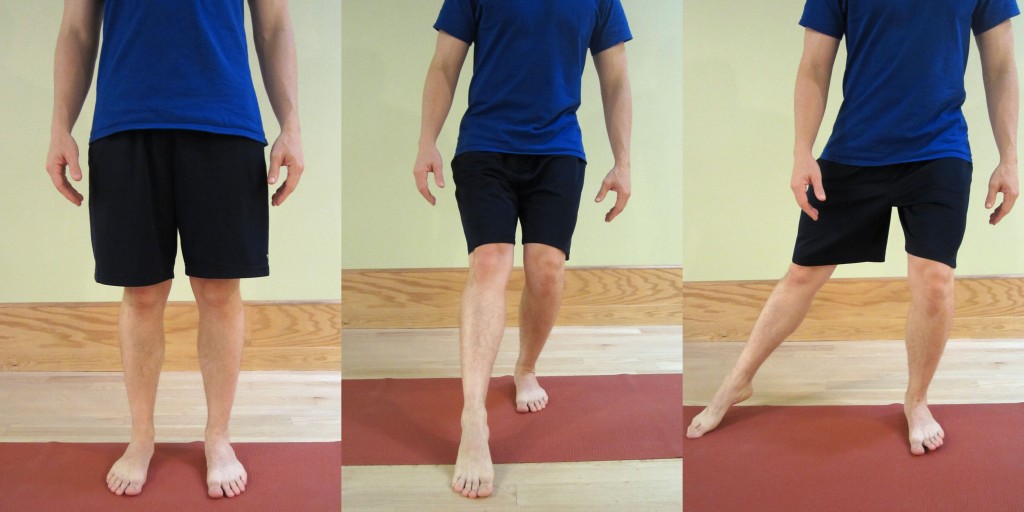Patellar Femoral Pain Syndrome (PFPS) is the physical therapy term for runner’s knee, a common condition experienced by runners. It accounts for roughly 25% of all reported cases of knee pain. PFPS is a term used to describe pain in many areas of the knee including: pain near the insertion point of the patellar tendon, just below the patella or knee cap; pain just above the knee cap where the quadriceps muscle is blending in and forming the quadriceps/patellar tendon; and/or pain underneath the patella.
Although there are many types of knee pain, many of the potential causative factors for PFPS are similar to other conditions such as IT Band Syndrome (ITBS) and Patellar Tendinitis. Treatments for knee pain can vary wildly from person to person. It can be quite painful and significantly affect a person’s ability to run or move properly. In the case of PFPS, the cause of the pain is often associated with a patellar or knee cap that is tracking in the femoral groove improperly.
Common Causes and Risk Factors for Knee Pain and specifically, Patellar Femoral Pain Syndrome (PFPS) include:
- Poor quadriceps strength (particularly the inner/medial quadriceps).
- Poor hip abductor and/or hip external rotator strength.
- Improper foot biomechanics during the single leg stance phase of the gait cycle or the mid foot strike during running.
One of the primary treatments for nearly all types of knee pain (including PFPS, Patellar Tendinitis, ITBS, and meniscus injury) is to improve your quadriceps and hip strength. Quadriceps strength is an important component to your long term management and recovery. As part of the quadriceps strengthening protocol, I have found it useful to skew toward the inner quad, known as the vastus medialis oblique (VMO). Although you cannot specifically isolate the VMO, I still recommend implementing exercises that are likely to activate the muscle more when performed correctly.
The other critical factor is weak hip abduction and hip external (lateral) rotation muscles, which significantly contribute to PFPS. The purpose of the lateral and external rotators of the hip is to prevent internal rotation (rolling in) of the hip and knee. They also provide the stability for the pelvis and lower leg when in single leg stance. The hip muscles are critical in controlling knee stability and ultimately, patellar (knee cap) tracking. Adequate strength of the rotators and abductors of the hip is critical.
In this video, I demonstrate how to perform an advanced exercise known as the clock or star drill. It’s an excellent exercise to work on knee stability and balance while specifically focusing on quadriceps and hip strength. Although I demonstrate the exercise with a barbell in the video, I recommend that you initially be perform it without weight (as demonstrated below). As you progress, then you could add weight.

Have you performed the clock or star drill before? If so, what was your experience like? Please leave your comments below.
For more information on how to self-treat differing types of knee pain, please refer to the following:
- How to Self-Treat Patellar Femoral Pain Syndrome
- Q & A: 7 Tips to Get Rid of Knee Pain
- How to Self-Treat IT Band Syndrome
- Exercise is an Effective Treatment for Knee Arthritis Pain
- Marathon Training Academy Guest Post: How to Self-Treat Runner’s Knee
- Marathon Training Academy Guest Post: 9 Tips to Self-Treat Iliotibial Band Syndrome
- I also address ITBS, along with other common running related injuries and treatment methods, on the Marathon Training Academy Podcast.
Looking for that exercise or book I mentioned in a post? Forgot the name of a product or supplement that you’re interested in? It’s all listed in the Resource Guide. Check it out today!
If you have a question that you would like featured in an upcoming blog post, please comment below or submit your question to contact@thePhysicalTherapyAdvisor.com. Be sure to join our growing community on Facebook by liking The Physical Therapy Advisor!
